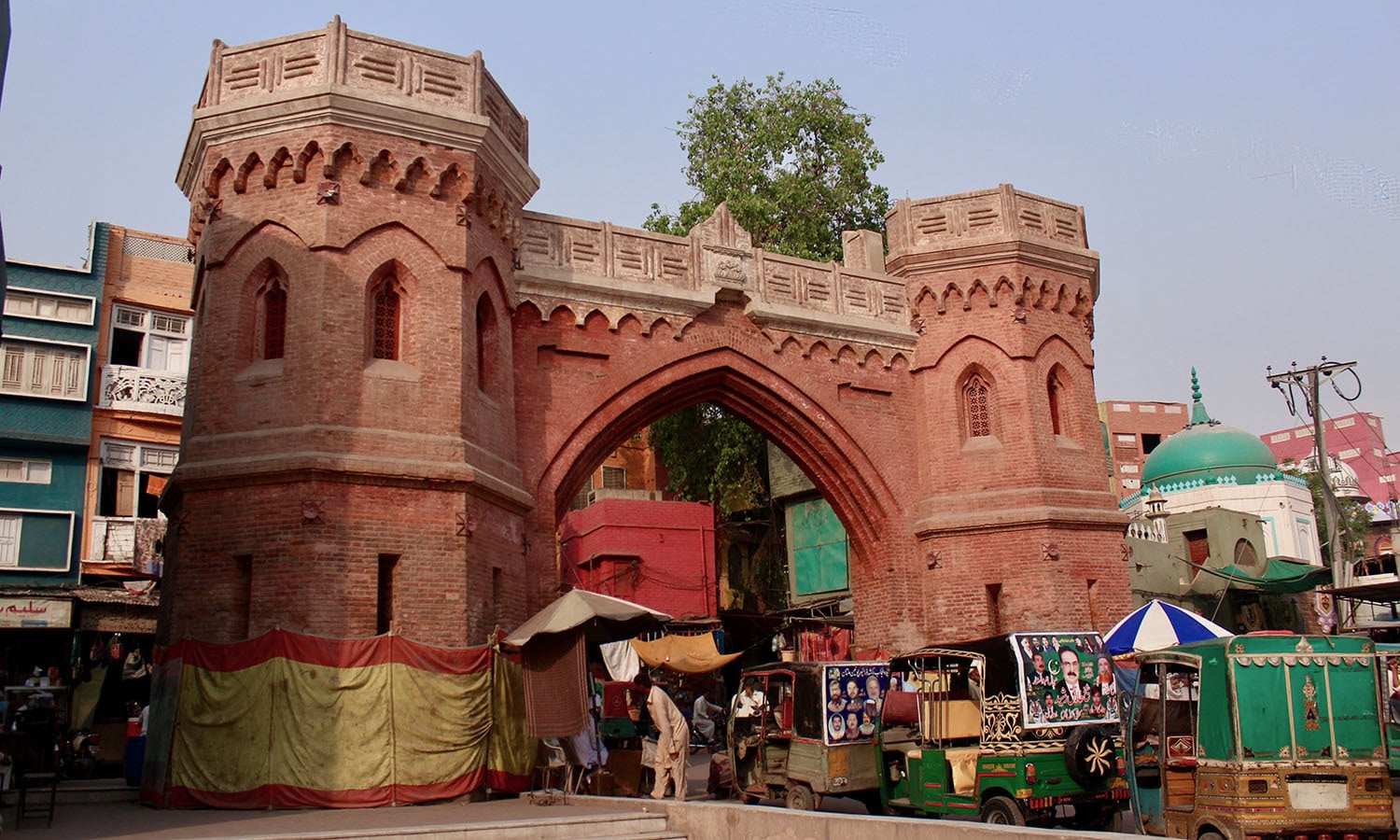
Multan stands as a living testament to over 2,000 years of history. Widely revered as the “City of Saints”, this ancient metropolis is one of South Asia’s oldest continuously inhabited cities. Its dusty streets echo with the chants of Sufi mystics, while its skyline is adorned with intricately tiled domes and minarets that tell stories of devotion, conquest, and cultural fusion.
Multan’s strategic location—along the banks of the Chenab River—made it a prized possession for numerous empires. From the Aryans and the Greeks to the Mughals and the British, each left a mark on the city’s diverse architectural and cultural landscape. Walking through its old quarters, one encounters centuries-old shrines, vibrant bazaars, and fortified gates that whisper tales of a bygone era.
But Multan is not just about the past. Today, it is a modern urban hub teeming with life, education, commerce, and hospitality. Home to renowned universities, textile industries, and mango orchards, the city balances tradition with progress. Its warm hospitality, rich culinary offerings, and deep-rooted spirituality attract thousands of visitors each year.
Whether you’re a history buff, spiritual seeker, or curious traveler, Multan promises a journey filled with color, culture, and contemplation. This comprehensive Multan Travel Guide will walk you through its major attractions, travel logistics, best seasons to visit, local cuisine, accommodations, and essential tips—equipping you to explore the city with confidence and cultural awareness..
Table of Contents
ToggleTop Tourist Attractions in Multan
1. Tomb of Shah Rukn-e-Alam
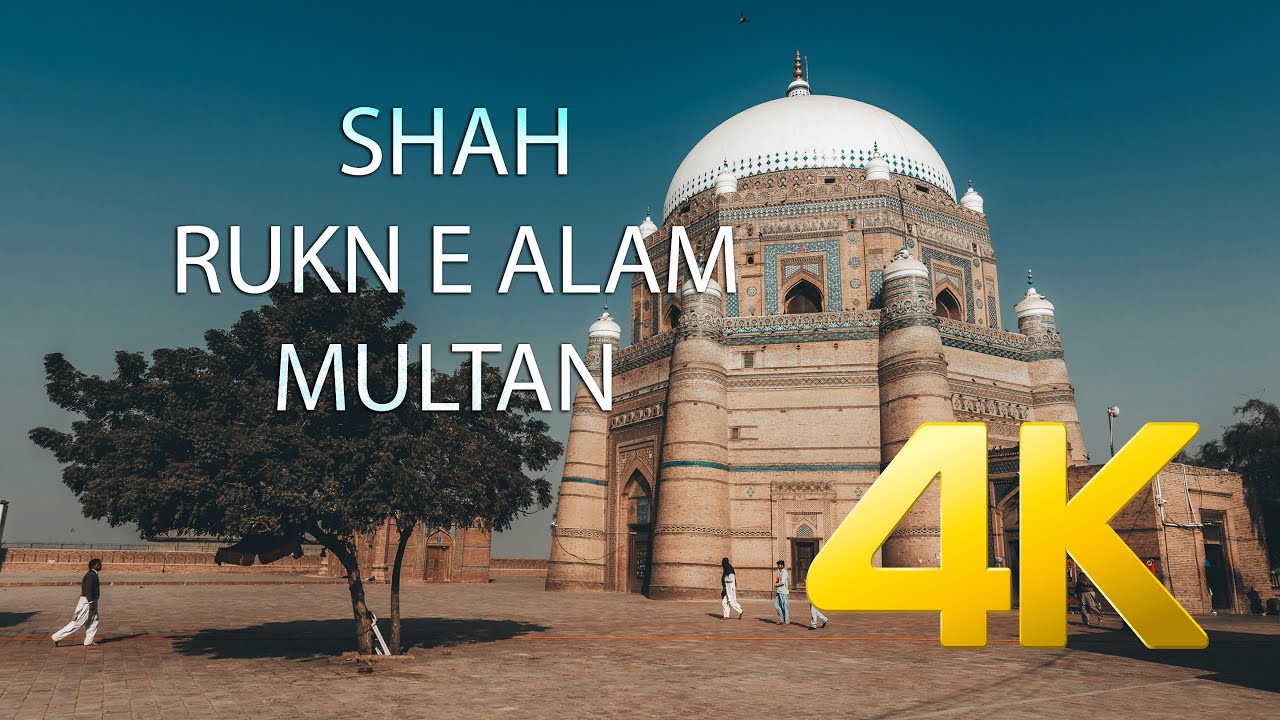
Standing proudly atop a hill in the Multan Fort area, the Tomb of Shah Rukn-e-Alam is the most iconic symbol of the city. Built between 1320 and 1324 AD, this architectural marvel houses the remains of the revered Sufi saint Sheikh Rukn-ud-Din Abul Fateh, commonly known as Shah Rukn-e-Alam. His spiritual legacy continues to draw thousands of devotees from all over Pakistan and beyond.
The tomb’s architectural style is a stunning example of pre-Mughal Islamic architecture, combining elements of Tughlaq and indigenous craftsmanship. Its octagonal base, tapering structure, intricate tile work, and grand wooden entrance reflect the spiritual and aesthetic brilliance of the 14th century.
Visitors can explore the interior chamber, adorned with calligraphic inscriptions, and enjoy panoramic views of the city from the elevated platform. The best time to visit is during Shah Rukn-e-Alam’s Urs (annual death anniversary), which offers a deeply spiritual experience with qawwalis, Sufi gatherings, and local festivities.
Photography Tip: Capture the tomb at sunrise or sunset when its brick-red facade glows under the changing sky.
2. Multan Fort and Qasim Bagh
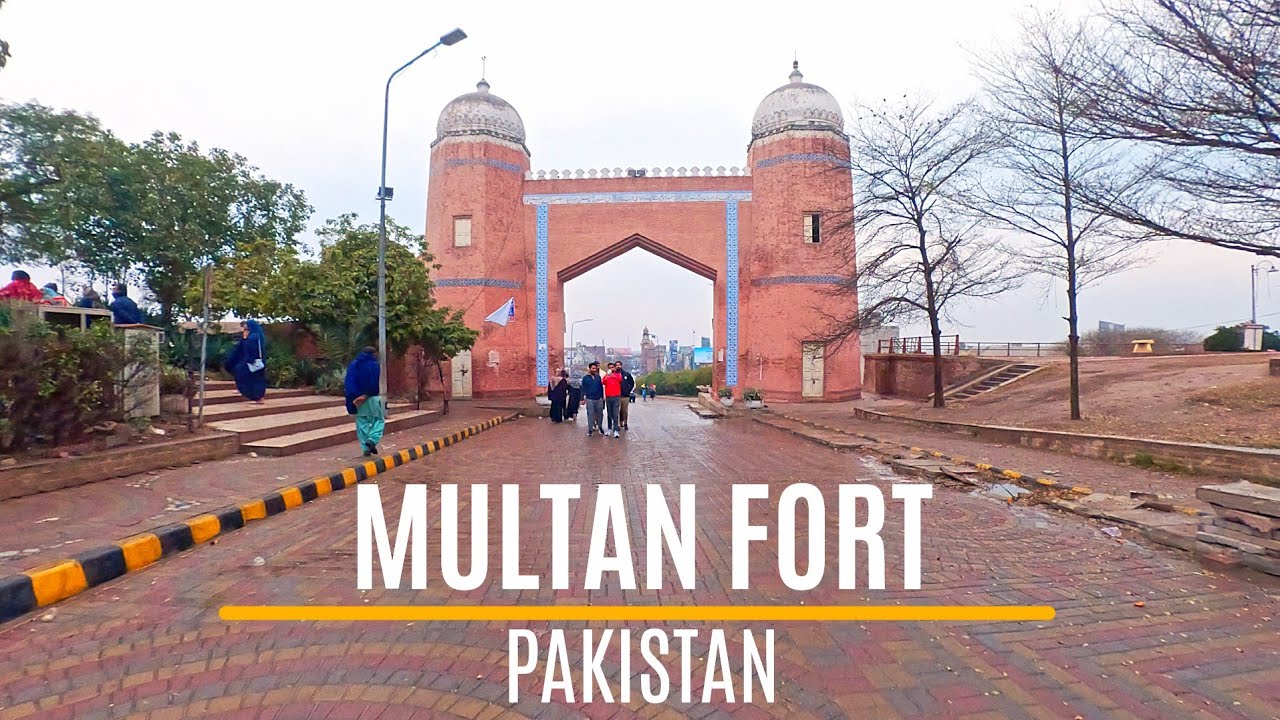
Once a mighty bastion of defense, the Multan Fort (also known as Qila Kohna Qasim Bagh) dates back to 2500 years, although most of the current ruins belong to the later eras. The fort was destroyed and rebuilt several times by invaders, including Alexander the Great, the Ghaznavids, and the British.
Although much of the original structure lies in ruins, key features like the Qasim Bagh Stadium, Dam Dama (watchtower), and Remnants of the ancient walls and gates still remain. It is also home to Shah Rukn-e-Alam’s tomb, making it a convenient stop for travelers.
Wander through the site and feel the layers of history. With views overlooking the city, it’s a great place to relax or picnic under the shade of acacia trees.
Travel Tip: Visit during weekdays to avoid crowds and bring water, especially in the hotter months.
3. Ghanta Ghar (Clock Tower)
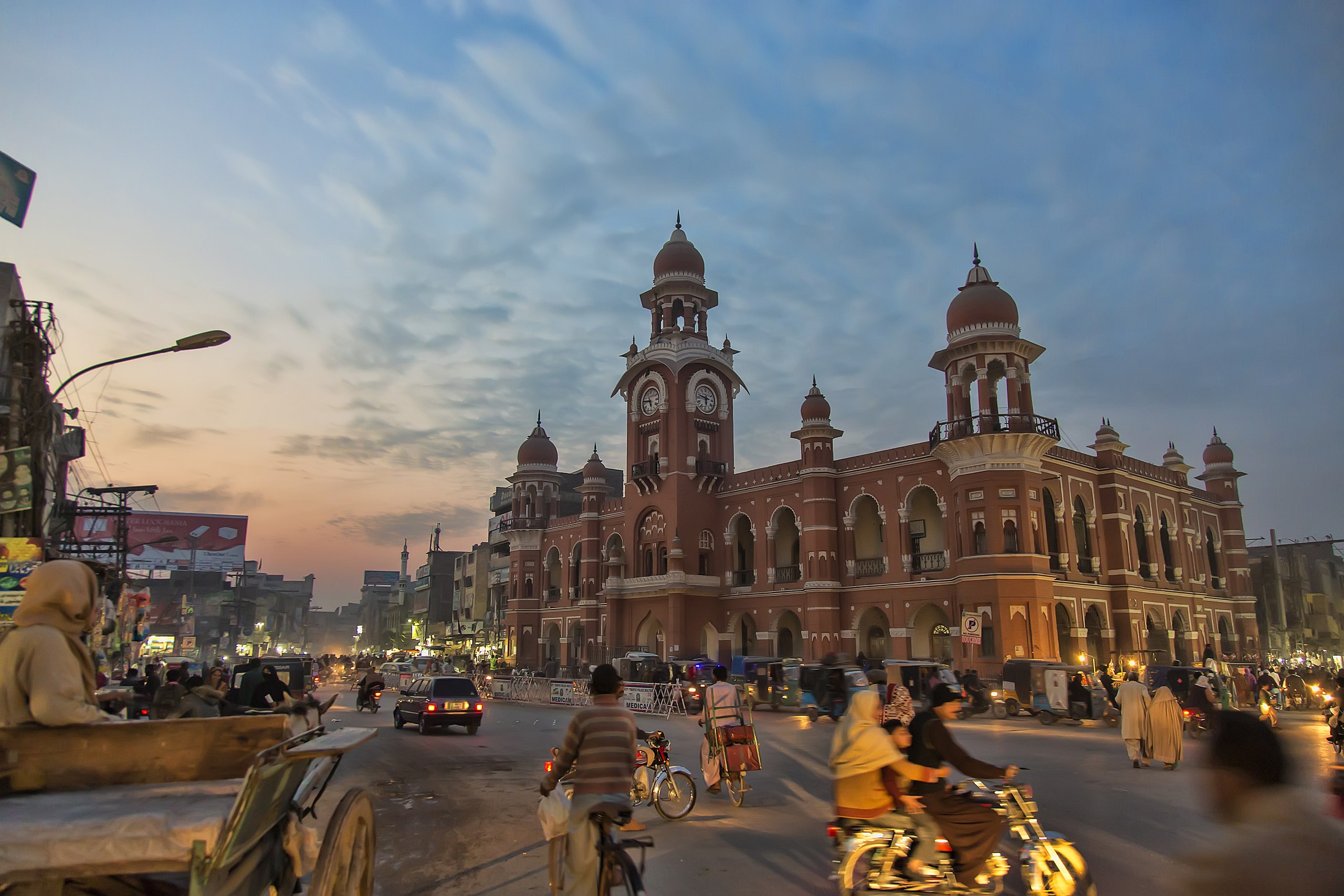
Located at the heart of the city, Ghanta Ghar is not just a landmark but also a symbol of colonial-era Multan. Constructed in 1884 during British rule, the red-brick Clock Tower now houses the Multan Museum, offering a fascinating look into the city’s cultural and archaeological heritage.
The surrounding Ghanta Ghar Market is a labyrinth of shops selling multani blue pottery, embroidered textiles, ajrak, jewelry, and local spices. It’s a perfect blend of history and modern-day hustle.
Cultural Insight: Be prepared for vibrant noise, bargaining, and aromatic scents—it’s all part of the authentic Multan experience!
4. Shrine of Bahauddin Zakariya
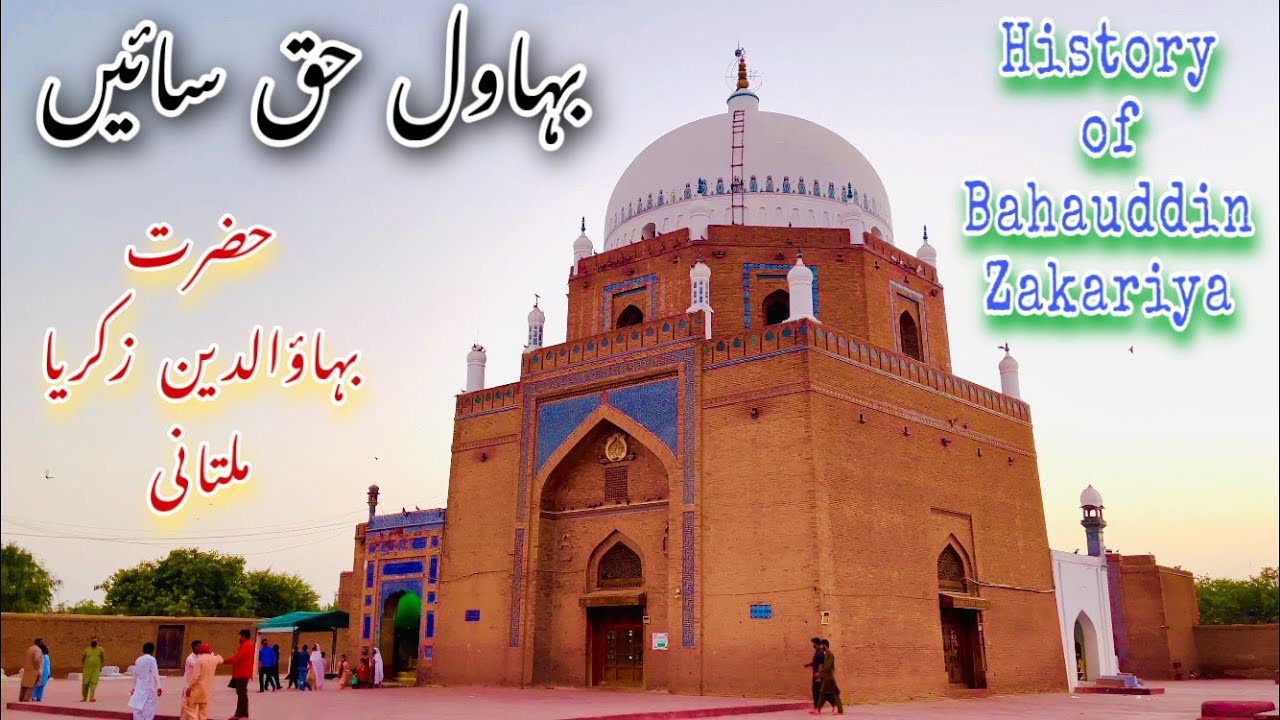
This sacred site honors Hazrat Bahauddin Zakariya, a prominent 13th-century Sufi saint and a key figure in the Suhrawardi Sufi order. The shrine, built in 1267 AD, is located near the Multan Fort and boasts a majestic red-brick structure adorned with intricate blue tile work.
The saint’s teachings emphasized love, tolerance, and community welfare—values that are deeply ingrained in the local culture. Pilgrims from all over the country visit the shrine, especially during the Urs festival held annually.
Etiquette Tip: Dress modestly and remove shoes before entering the shrine area.
5. Shrine of Shah Shams Sabzwari
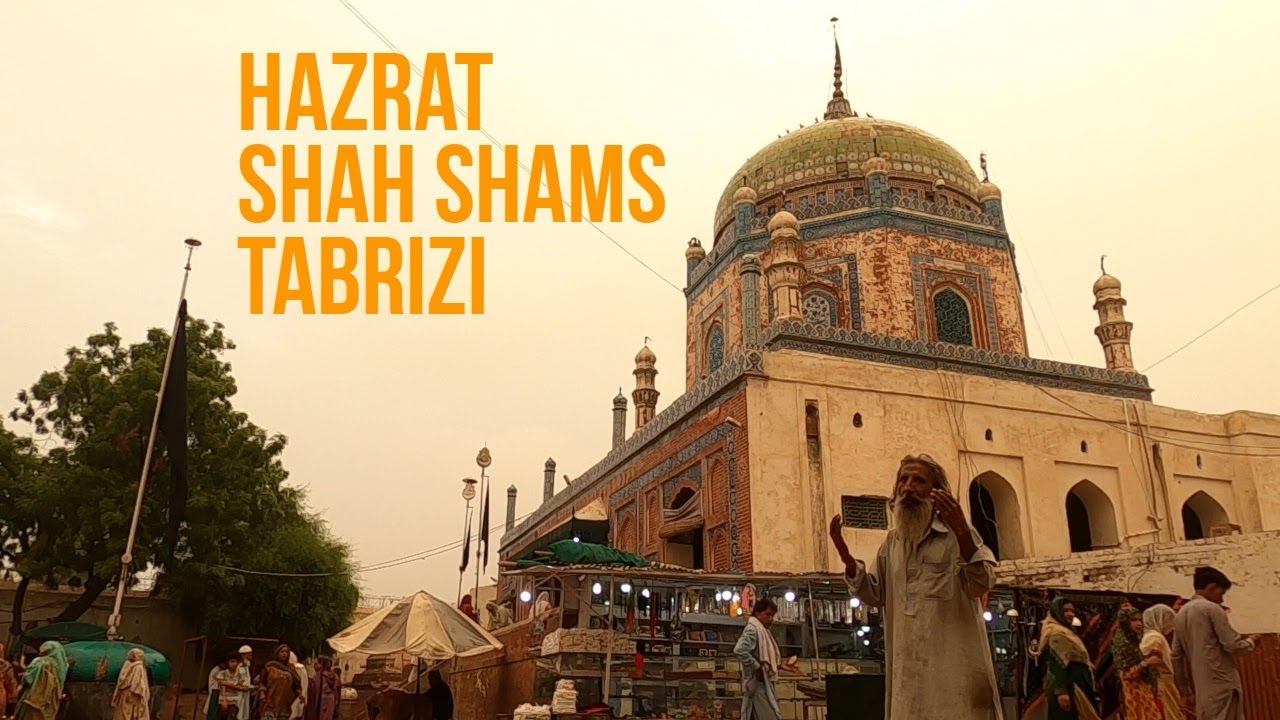
Another revered figure in Multan’s spiritual heritage, Shah Shams Sabzwari was a 13th-century saint credited with spreading Islam in the subcontinent. His shrine is located just a few kilometers from the city center and offers a peaceful refuge for those seeking spiritual solace.
Unlike the other grand mausoleums, Shah Shams’ tomb has a unique circular dome with turquoise tiles, creating a vibrant contrast against the Multani skyline. The surrounding courtyards are often filled with Sufi music and prayer rituals.
Best Time to Visit: Evening hours for cooler temperatures and devotional qawwalis.
6. Hussain Agahi Bazaar
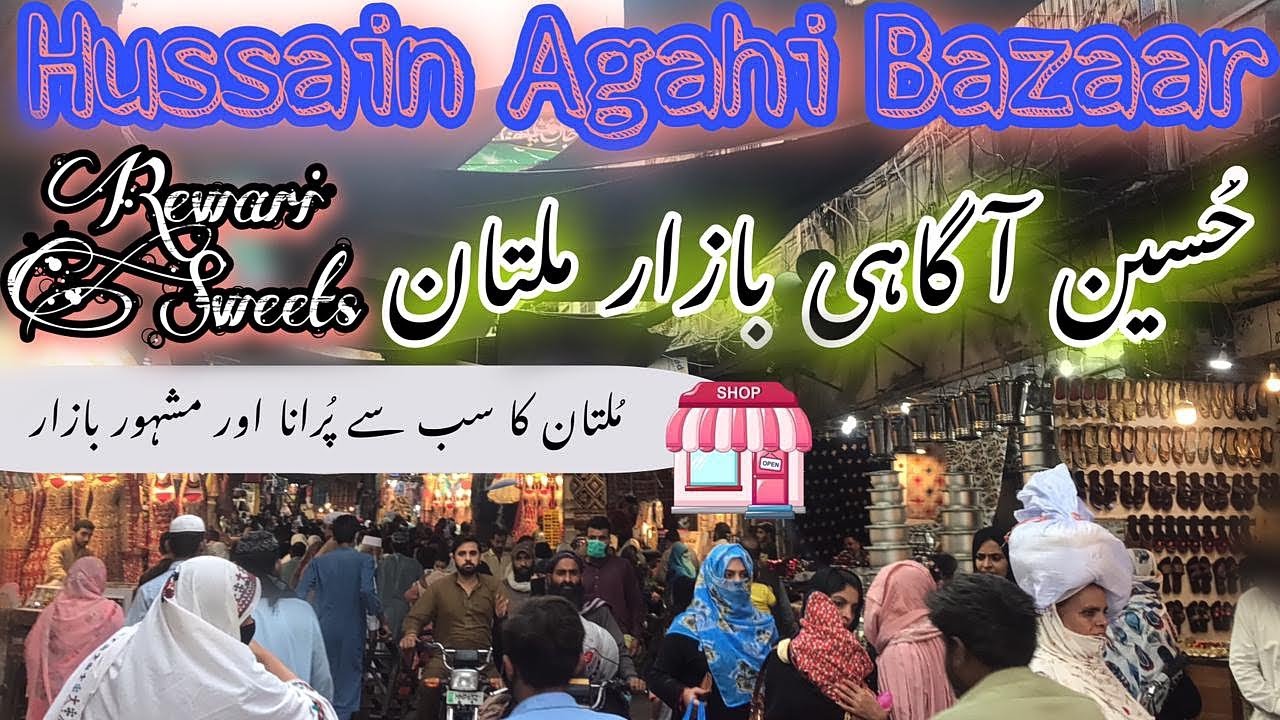
Step into the beating heart of old Multan with a visit to the Hussain Agahi Bazaar—a bustling traditional market known for its colorful ambiance and historic relevance. The bazaar dates back to centuries and is a hotspot for shopping handicrafts, camel-skin lamps, ajrak shawls, embroidered khussas, and more.
Navigating its narrow lanes is a sensory delight, with the aroma of Multani halwa, chai, and spices permeating the air. It’s a must-visit for those who wish to experience the local lifestyle and pick up authentic souvenirs.
Shopping Tip: Bargaining is expected—don’t hesitate to negotiate!
7. Eidgah Mosque
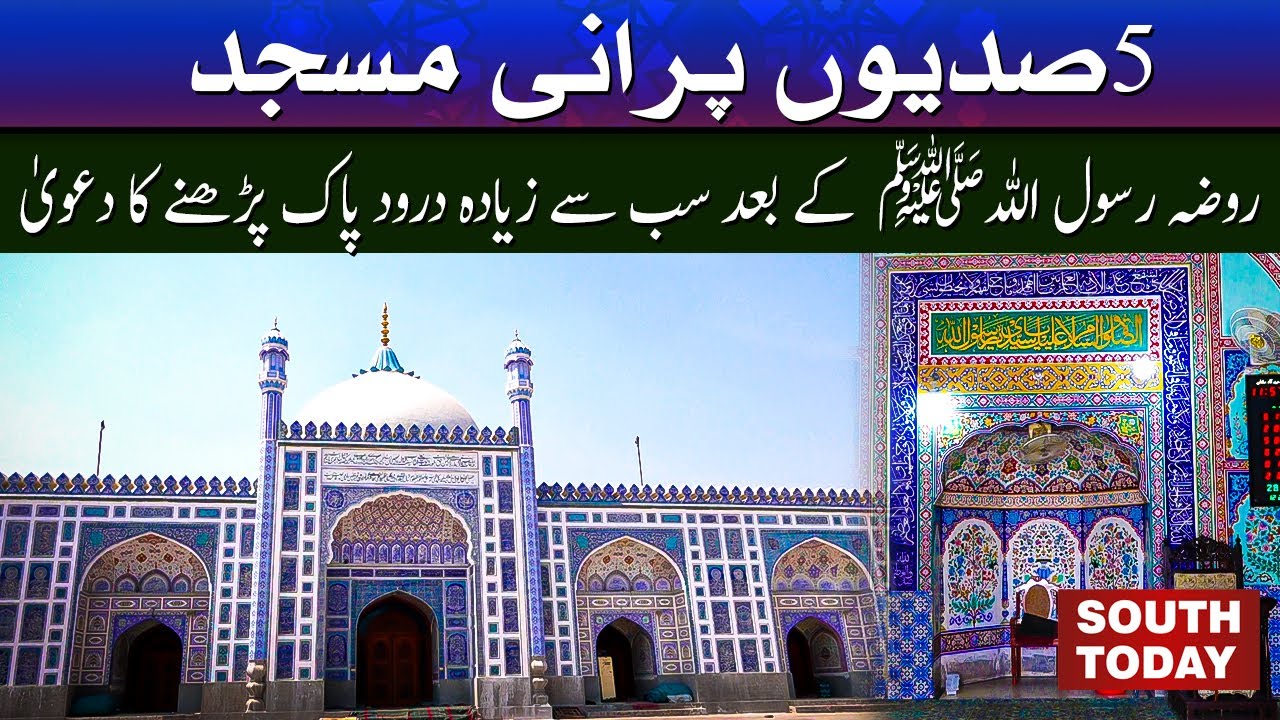
The majestic Eidgah Mosque, also known as the Sawi Mosque, is an important religious site in Multan. Built in 1735 by Nawab Abdul Samad Khan, this mosque is a fine example of Mughal-era architecture, with grand domes, intricate floral frescoes, and a spacious prayer hall.
Located on the eastern outskirts of the city, the mosque plays a central role during Eid prayers, drawing huge congregations. The surrounding gardens make it a serene place to visit for both worship and appreciation of architectural artistry.
Tip for Travelers: Visit early in the morning for peaceful photography and fewer crowds.
8. Multan Arts Council
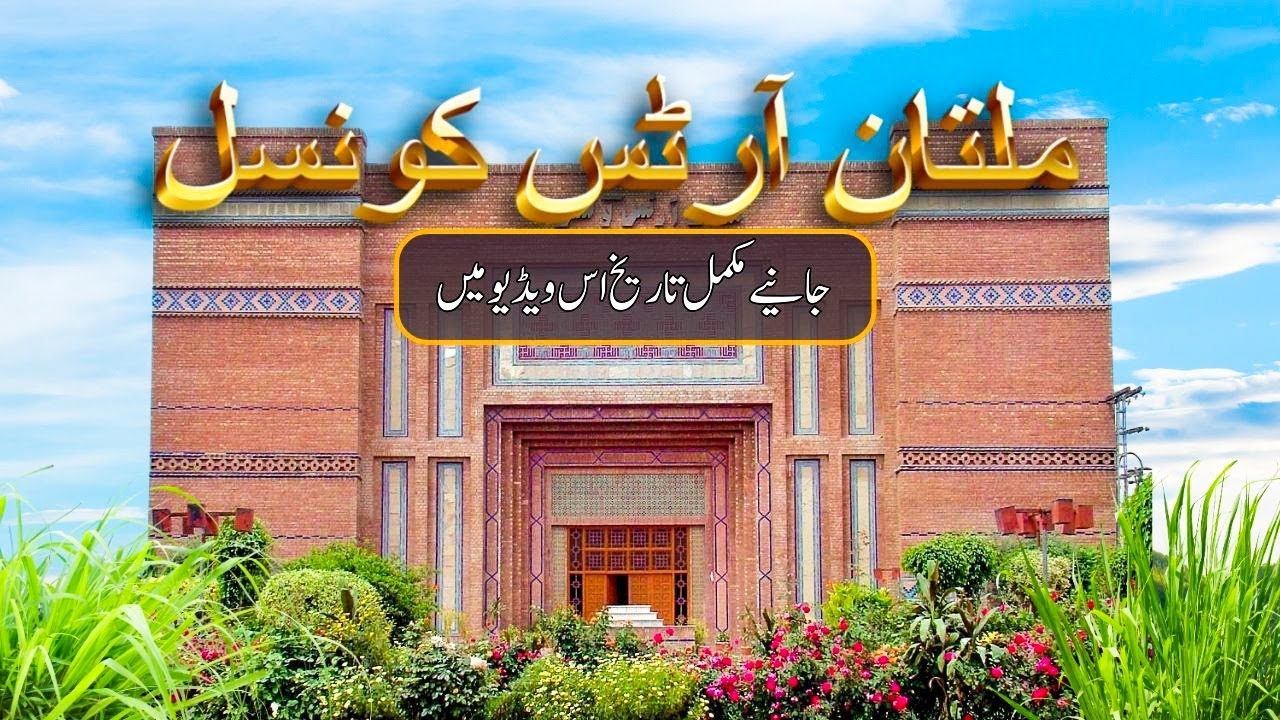
For a glimpse into the city’s vibrant contemporary culture, head to the Multan Arts Council, established in 1975. It hosts art exhibitions, cultural festivals, music concerts, and dramatic performances that reflect the diversity of the region.
The building itself is a unique blend of modern and traditional design, making it an architectural attraction in its own right. It’s a great place to connect with local artists and witness Multan’s creative spirit in action.
Event Watch: Check schedules ahead of time—seasonal events often include local crafts exhibitions and musical nights.
9. Shrine of Mai Maharban
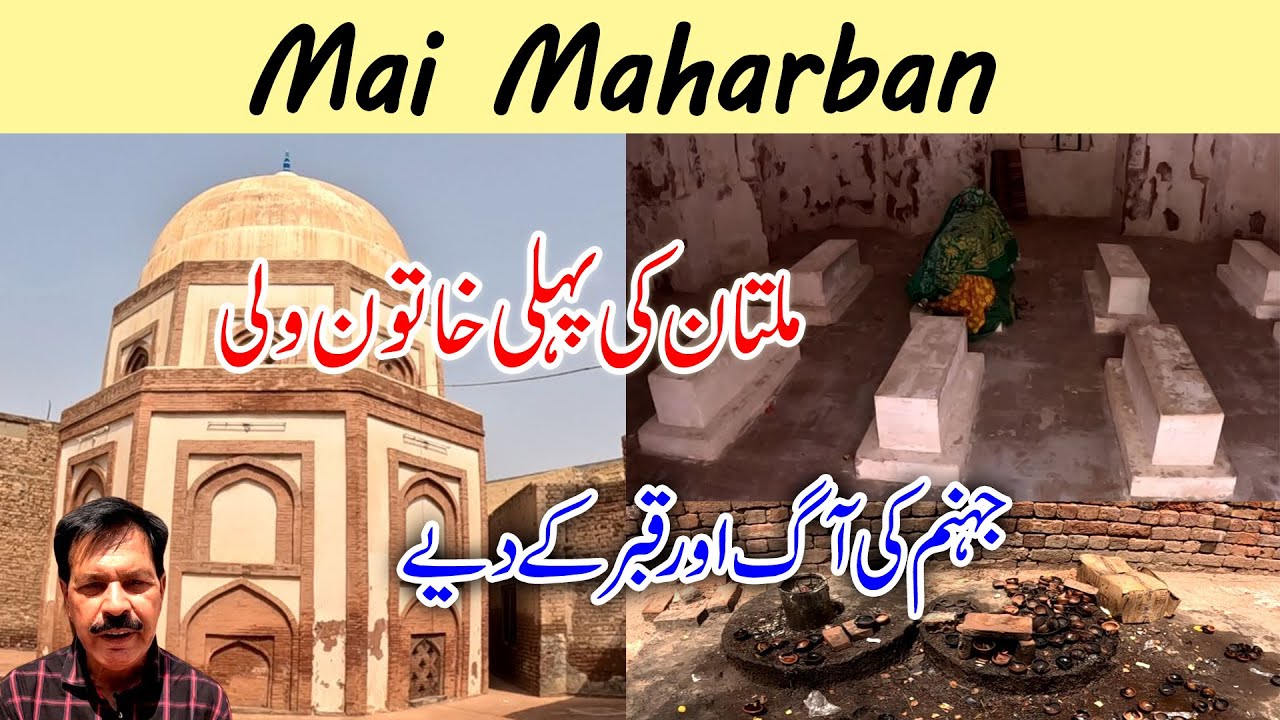
Among Multan’s lesser-known but spiritually powerful sites is the Shrine of Mai Maharban, a revered female Sufi figure. Located in the older part of the city, this small but significant shrine attracts a steady stream of women and families seeking blessings, healing, and guidance.
What sets this shrine apart is its emphasis on women’s spirituality and inclusiveness, offering a unique perspective on the city’s Sufi traditions.
Cultural Note: This site provides a respectful insight into the role of women in Sufism and Pakistani spirituality.
10. Bahauddin Zakariya University Campus
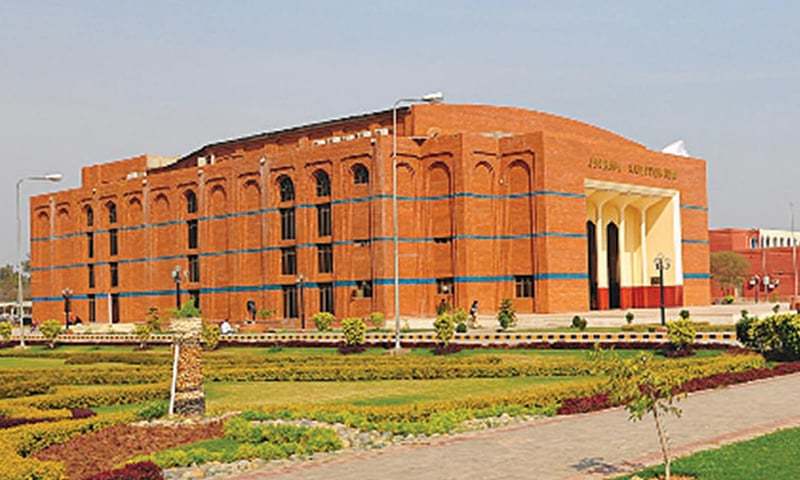
Though primarily an educational institution, Bahauddin Zakariya University (BZU) offers travelers a window into modern Multan. The large campus is known for its green spaces, research centers, and architectural layout.
Visitors can explore the university mosque, art departments, and botanical gardens, or attend public seminars and cultural programs if available. It’s a refreshing change of pace from the city’s historical core.
Traveler Tip: Combine a visit to BZU with nearby local eateries for a youthful, modern Multani experience.
Getting to and Around Multan
Multan’s strategic position in southern Punjab makes it a well-connected hub for travelers coming from all parts of Pakistan and even abroad. Whether you’re flying in, driving across scenic highways, or hopping aboard a train, reaching Multan is convenient and flexible for every travel style and budget.
By Air: Multan International Airport (MUX)
The Multan International Airport (MUX) is the city’s main aviation gateway, located just 10 kilometers from the city center. It connects Multan to major cities like Karachi, Lahore, Islamabad, Quetta, Faisalabad, and international destinations in the Middle East, including Dubai, Doha, Muscat, and Jeddah.
The airport offers modern facilities, including currency exchange, car rentals, and app-based ride services. From the airport, you can take a taxi, rickshaw, or ride-hailing service (Careem/InDrive) directly to your hotel or destination.
Travel Tip: Book flights early during holidays and peak travel seasons like Eid and summer vacation to secure the best fares.
By Road: Bus and Car Travel
Multan is well-linked via national highways and motorways. Travelers from Lahore, Islamabad, Faisalabad, Karachi, and other cities can reach Multan comfortably by road.
-
From Lahore: ~5.5 hours (via M-4 and N-5)
-
From Islamabad: ~8 hours (via M-4 Motorway)
-
From Karachi: ~10-12 hours (via N-5 National Highway)
Intercity buses are frequent and reliable. Major bus services like Daewoo Express, Faisal Movers, and Skyways operate daily trips to Multan from most Pakistani cities, offering VIP, Executive, and Economy options.
Budget Tip: Faisal Movers often offers cost-effective packages with multiple class options.
By Train: Pakistan Railways
Multan’s Cantonment Railway Station (Multan Cantt) is one of the busiest in the country. Multiple daily trains connect Multan with Lahore, Rawalpindi, Karachi, Quetta, and Peshawar. Services include Green Line Express, Awam Express, and Tezgam.
Train travel is an excellent choice for budget travelers and offers a chance to enjoy Pakistan’s rural countryside.
Pro Tip: Book your tickets online through the official Pakistan Railways website or app to avoid long queues.
Local Transportation Within Multan
Once in Multan, getting around the city is easy and affordable.
Ride-Hailing Apps
-
Careem and InDrive are the most popular and reliable.
-
Affordable, comfortable, and widely available in all urban areas.
Auto Rickshaws and Qingqis
-
Widely used and convenient for short distances.
-
Always agree on the fare in advance or ask locals for pricing benchmarks.
Local Buses and Vans
-
Budget-friendly but may be confusing for first-time travelers due to lack of route signage.
-
Best for those with some Urdu language skills or local guidance.
Car Rentals
-
Ideal for families or business travelers who want to explore at their own pace.
-
Available through local agencies and airport desks.
Travel Safety and Navigation Tips
-
Always keep Google Maps or offline maps handy.
-
Avoid late-night travel in unfamiliar areas.
-
Keep cash in small denominations for rickshaws and bazaars.
-
Respect local customs, especially in religious areas and rural zones.
Weather and Best Time to Visit Multan
Multan experiences a semi-arid climate, characterized by hot summers, mild winters, and low annual rainfall. Due to its southern Punjab location, the city’s weather can be extreme at times, so planning your trip around the right season is crucial for a comfortable travel experience.
Seasonal Climate Breakdown
Summer (April to September)
-
Temperature Range: 30°C to 48°C (86°F to 118°F)
-
Weather: Extremely hot and dry with occasional dust storms.
-
Travel Advice: Summer is not ideal for sightseeing unless you’re accustomed to high heat. Outdoor exploration can be uncomfortable, and dehydration is a risk without precautions.
Tip: If traveling during this time, plan indoor activities in the afternoon and stay hydrated.
Monsoon Season (July to August)
-
Temperature Range: 30°C to 42°C (86°F to 108°F)
-
Weather: Slight relief from the heat with occasional rain showers.
-
Travel Advice: While the rain may cool things down temporarily, humidity levels rise. Roads may be muddy or slippery, especially in older areas.
Caution: Localized flooding and power outages can occur during heavy rains.
Autumn (October to November)
-
Temperature Range: 18°C to 34°C (64°F to 93°F)
-
Weather: Pleasant with dry air and clearer skies.
-
Travel Advice: A great time for sightseeing, especially as tourist crowds remain moderate. Ideal for exploring shrines, markets, and historical monuments.
Winter (December to February)
-
Temperature Range: 7°C to 23°C (45°F to 73°F)
-
Weather: Mild, comfortable, and dry—perfect for all kinds of travel.
-
Travel Advice: This is considered peak tourist season in Multan. Days are sunny and crisp, while nights can be chilly.
Packing Tip: Bring light layers or a jacket for evenings and early mornings.
Spring (March)
-
Temperature Range: 18°C to 32°C (64°F to 90°F)
-
Weather: Blooming flowers, warm days, and cool breezes.
-
Travel Advice: A beautiful and serene time to visit before the summer heat kicks in. Great for outdoor photography and festivals.
Best Time to Visit Multan
-
Ideal Months: October to March
-
These months offer the most comfortable temperatures, making it easy to explore the city’s outdoor attractions like Multan Fort, shrines, and bazaars without the oppressive heat.
-
Festival Season: Sufi Urs festivals for saints like Shah Rukn-e-Alam and Bahauddin Zakariya usually fall between November and January, offering an immersive cultural and spiritual experience for visitors.
-
Mango Season: Multan is famous for its mangoes, and the harvest season (May to July) is a treat for fruit lovers—but be prepared for intense heat.
Weather-Related Travel Tips
-
Carry a reusable water bottle, especially in dry months.
-
Use sunscreen, hats, and sunglasses during daytime visits.
-
Keep an umbrella or raincoat during the monsoon if visiting rural areas.
-
Dress in light, breathable fabrics during warmer months and bring modest clothing when visiting religious sites.
Flavors of Multan: A Culinary Journey Through the City of Saints
Multan’s cuisine is a flavorful fusion of Punjabi boldness, Sufi simplicity, and indigenous southern flair. Influenced by centuries of trade, migration, and spiritual gatherings, Multani food is known for its rich spices, slow-cooked meats, and mouthwatering sweets. Whether you’re a fan of fiery karahis, melt-in-your-mouth kebabs, or indulgent desserts, Multan’s food scene delivers a deeply satisfying experience.
Must-Try Traditional Dishes in Multan
1. Multani Sohan Halwa
-
The city’s culinary crown jewel, Sohan Halwa, is a dense, sweet delicacy made from wheat flour, milk, sugar, ghee, and dried fruits. It has a chewy, flaky texture and is typically garnished with almonds and pistachios.
-
Best Places: Hafiz Sohan Halwa, Rewari Sweets, and Munawar Sweets.
Tip: Buy it vacuum-packed for safe transport and gifting.
2. Multani Karahi
-
A spicier and deeper-flavored variant of the traditional karahi, Multani-style uses desi ghee, crushed spices, and bone-in meat, slow-cooked for hours.
-
Best with: Roghani naan or tandoori roti.
-
Where to try: Al Hashmi Karahi, Shahjahan Grill, or Multani Handi House.
3. Channay (Chickpea Curry) and Naan
-
A breakfast staple across Multan, this combo offers hearty, protein-packed chickpeas simmered in gravy, served with fresh naan or kulcha.
-
Where to eat: Street vendors near Ghanta Ghar or local dhabas.
4. Daal Sultani
-
A signature lentil dish, Daal Sultani blends yellow lentils with butter, milk, and spices, giving it a creamy texture and subtle flavor. It’s unique to the region and a must-try for vegetarians.
-
Where to try: Sultan’s Food Court, Sufra Multan.
5. Sajji
-
Though native to Balochistan, Sajji (whole roasted chicken or lamb) is immensely popular in Multan. Marinated with spices and slow-cooked over coal, it’s both tender and aromatic.
-
Best Spots: Balochi Sajji House, BBQ Tonight Multan Branch.
Street Food in Multan
Multan’s street food scene is both affordable and flavorful, making it ideal for food lovers on a budget.
-
Gol Gappay (Pani Puri): Spicy, crunchy, and served with tangy mint water—find them near Hussain Agahi Bazaar.
-
Dahi Bhallay: Lentil dumplings soaked in yogurt and chutneys, perfect for cooling down in the afternoon.
-
Fruit Chaat & Gola Ganda: Refreshing summer treats found near Clock Tower and local markets.
-
Tawa Chicken Roll Paratha: A spicy street-side snack made fresh on a griddle.
Street Food Tip: Always choose busy stalls with high turnover to ensure freshness and hygiene.
Famous Restaurants in Multan
| Restaurant | Cuisine Type | Price Range | Highlights |
|---|---|---|---|
| Shahjahan Grill | Pakistani & BBQ | Mid to High | Family-friendly, rooftop views |
| Bundu Khan Multan | BBQ & Desi | Moderate | Reliable quality and service |
| Zaytoon Multan | Continental & Desi | Moderate | Fusion menu with artistic ambiance |
| Biryani Master | Pakistani & Fast Food | Budget | Popular for quick, flavorful meals |
| Bahauddin Café (BZU Area) | Budget Student-Friendly | Budget | Great for street-style snacks and tea |
Culinary Experiences & Food Tours
For an immersive experience, consider:
-
Local Food Walks through Ghanta Ghar and Saddar.
-
Cooking classes offered by boutique guesthouses or cultural centers.
-
Traditional Multani Tea Houses where you can enjoy doodh patti with fresh parathas.
Cultural Tip: Tipping (10–15%) is appreciated in sit-down restaurants. Always ask if service charges are included in the bill.
Where to Stay in Multan: Accommodation Guide
Multan offers a diverse range of accommodations suited to all types of travelers — from backpackers on a budget to luxury seekers looking for top-tier amenities. Whether you want to stay close to historical landmarks, commercial hubs, or peaceful outskirts, Multan provides clean, comfortable, and culturally immersive lodging options.
Top Neighborhoods to Stay In
-
Cantt Area (Cantonment)
-
Safe, clean, and close to railway station, airport, and shopping centers.
-
Ideal for business travelers and families.
-
-
Bosan Road
-
Lively and central, close to Bahauddin Zakariya University.
-
Great for students, long-term travelers, and food lovers.
-
-
Gulgasht Colony
-
Upscale residential area with boutique hotels, cafes, and quiet surroundings.
-
Perfect for couples or travelers seeking comfort and privacy.
-
Recommended Hotels in Multan
1. Ramada by Wyndham Multan
-
Category: 4-Star
-
Price Range: PKR 18,000 – PKR 30,000 per night
-
Highlights:
-
Centrally located near Cantt
-
Modern rooms, pool, fitness center, and buffet breakfast
-
Popular with foreign travelers and business guests
-
2. Avari Xpress Multan
-
Category: 3-Star Boutique
-
Price Range: PKR 12,000 – PKR 18,000 per night
-
Highlights:
-
Trendy interiors and professional service
-
Near Ghanta Ghar and Multan Arts Council
-
Great value for mid-range travelers
-
3. S Chalet Multan
-
Category: Boutique Hotel
-
Price Range: PKR 8,000 – PKR 12,000 per night
-
Highlights:
-
Homely atmosphere with garden space
-
Ideal for small families or couples
-
Located in a peaceful neighborhood
-
4. Hotel Grace Inn
-
Category: Budget Hotel
-
Price Range: PKR 4,000 – PKR 6,500 per night
-
Highlights:
-
Clean, basic amenities
-
Central location, walking distance to shops and eateries
-
Excellent for backpackers or solo travelers
-
5. BZU Guest Houses
-
Category: University Guest Lodging (Economy)
-
Price Range: PKR 2,000 – PKR 4,000 per night
-
Highlights:
-
Basic but safe accommodation for students or academics
-
Available upon request or university arrangement
-
Types of Accommodation
-
Luxury Hotels: Offer premium service, conference rooms, and fine dining. Examples: Ramada, Hotel One.
-
Mid-Range: Clean, safe, with added comfort and modern décor. Examples: Avari Xpress, Burj Al Mandi.
-
Budget Hotels & Guesthouses: Perfect for students, solo explorers, or short-term visitors.
-
Airbnb/Private Rentals: Gaining popularity with furnished apartments for longer stays.
Booking Tips for Travelers
-
Online Booking Platforms: Use sites like Booking.com, Agoda, and Sastaticket.pk for best deals.
-
Advance Booking: Essential during peak season (October–March) and religious festivals like Urs.
-
Local Travel Agents: Sometimes offer better group rates for domestic travelers.
-
Payment Methods: Most hotels accept credit/debit cards, but keep cash on hand for budget lodgings or walk-in bookings.
Safety Note: Choose accommodations with verified reviews and 24-hour front desk services, especially for solo travelers.
What to Expect
-
Wi-Fi: Available in most hotels, though speed may vary.
-
Check-In Time: Typically 12 PM to 2 PM.
-
Security: Most hotels have guards and CCTV systems.
-
Room Service & Laundry: Offered in mid-range and luxury hotels.
Frequently Asked Questions: Traveling to Multan
1. Is Multan safe for tourists?
Yes, Multan is generally safe for both domestic and international travelers. The city is known for its hospitality and spiritual culture. However, like any urban center:
-
Stick to populated areas, especially at night.
-
Avoid political gatherings or protests.
-
Keep your belongings secure in busy marketplaces.
Tip: Always inform your hotel or host of your whereabouts if exploring rural or unfamiliar areas.
2. What is Multan famous for?
Multan is best known as the “City of Saints”, home to dozens of Sufi shrines, historical forts, and vibrant bazaars. It’s also:
-
A hub for blue pottery, camel-skin handicrafts, and Sohan Halwa.
-
A spiritual center with deep historical significance in Islamic and South Asian history.
-
A major producer of premium mangoes, cotton, and textiles.
3. What’s the best time of year to visit Multan?
The ideal months to visit are October to March, when the weather is mild and pleasant. Avoid peak summer (May–August) unless you’re comfortable with extreme heat, often exceeding 45°C (113°F).
4. How many days are enough to explore Multan?
2 to 3 full days are enough to see Multan’s top attractions, including:
-
Historical sites like Shah Rukn-e-Alam’s Tomb and Multan Fort
-
Cultural experiences in Ghanta Ghar Market and Hussain Agahi Bazaar
-
Food tours and shrine visits
For a slower, more immersive experience, spend 4–5 days and explore nearby villages or mango orchards (seasonal).
5. What should I wear while visiting Multan?
Multan is culturally conservative. Travelers are advised to:
-
Dress modestly, covering arms and legs.
-
Avoid tight or revealing clothing, especially in religious or rural areas.
-
Carry a scarf or shawl when entering shrines or mosques.
Note: Lightweight, breathable fabrics are ideal due to the city’s dry climate.
6. Do people in Multan speak English?
Urdu and Punjabi are the most widely spoken languages. However:
-
English is understood in hotels, tourist areas, and among educated locals.
-
In markets or rural areas, some basic Urdu or gestures will be helpful.
7. Can I use my debit/credit card in Multan?
Yes, most hotels, restaurants, and large shops accept debit and credit cards. However:
-
Keep cash (PKR) for small purchases, local transport, and street food.
-
ATMs are widely available but may not always work with foreign cards, so plan ahead.
8. What souvenirs should I buy from Multan?
Popular souvenirs include:
-
Sohan Halwa
-
Blue pottery items
-
Camel-skin lamps
-
Hand-embroidered clothing and Ajrak
-
Multani Khussa (traditional leather footwear)
Where to shop: Ghanta Ghar Market, Hussain Agahi Bazaar, and local artisan shops near the shrines.
9. Are there any cultural etiquette tips I should know?
Yes. To show respect for local traditions:
-
Remove your shoes before entering shrines or homes.
-
Avoid public displays of affection.
-
Use your right hand when offering or receiving items.
-
Ask before taking photographs of people, especially women.
10. Is public transport reliable in Multan?
Multan has affordable and accessible transportation, including:
-
Auto-rickshaws and Qingqis
-
Careem and InDrive ride-hailing services
-
Intercity buses and taxis
Public transport like buses is more commonly used by locals and may be difficult to navigate for first-time visitors without local guidance.








